Picture this: you’re wandering through an ancient jungle, and there it is—a majestic Mayan temple adorned with intricate carvings. That’s when the magic of the main features of Mayan art and sculpture hits you.
I remember my first encounter; it was like stepping into a storybook with legends etched in stone. These weren’t just pretty pictures—they were history frozen in time, each line speaking volumes about the people who created them.
This post will whisk you back to those jungles and temples where the main features of Mayan art and sculpture will amaze you. You’ll learn how diverse materials from volcanic tuff to precious stones breathed life into their culture and why kings didn’t just rule but also posed for eternity as high-relief sculptures on massive stone slabs. Stick around—you won’t want to miss unraveling these timeless tales!
Table Of Contents:
- The Essence of Mayan Art and Sculpture: Main Features of Mayan Art and Sculpture
- The Intersection of Ancient Mayan Art and Language in Maya Civilization
- The Intersection of Art and Mayan Language in Civilization: Main Features of Mayan Art and Sculpture
- Architectural Marvels as Canvases for Mayan Artistry: Main Features of Mayan Art and Sculpture
- Ceramics and Pottery – The Everyday Art Forms of the Maya: Main Features of Mayan Art and Sculpture
- Cultural Significance Embedded in Themes and Symbolism: Main Features of Mayan Art and Sculpture
- Visual Narratives Captured on Walls – Murals and Paintings: Main Features of Mayan Art and Sculpture
- FAQs in Relation to Main Features of Mayan Art and Sculpture
- Conclusion: Main Features of Mayan Art and Sculpture
The Essence of Mayan Art and Sculpture: Main Features of Mayan Art and Sculpture
Peek into the world of ancient Maya, and you’ll find a realm where every stone tells a story, each carving reveals a belief, and art isn’t just for looks—it’s steeped in cosmic significance. The ancient Maya left an impressive legacy that lets us glimpse their sophisticated culture.
Diverse Materials in Creation
The versatility of Mayan artists knew no bounds—they were like DJs spinning tracks from any record they could get their hands on. Stone sculpture wasn’t merely chipping away at the rock but coaxing stories from silent volcanic tuff or limestone. Wood carvings weren’t just about shaping timber but unleashing spirits trapped within mahogany’s dense fibers. From the intricacies etched onto conch shells to delicate bone needles, these materials were more than media; they were messages from earth to heaven.
Picture this: high relief carvings on large stone slabs standing tall at temple entrances—silent guardians narrating epic tales without uttering a word. And let’s not forget jade—precious stones carved with such care that they seem to pulse with life even today.
Naturalistic Portrayals of Royalty
If Instagram existed back then, maya kings would have been all over it. Naturalism was the game’s name when sculptors immortalized enthroned rulers with uncanny accuracy—a trendsetter move by Classic Maya standards. But it went beyond likeness; sculptures captured essence—the divine suitable ruling families believed flowed through their veins.
You’d see kings depicted as jaguars or maize gods, Maya glyphs so potent you can almost hear them whisper power plays across centuries past. Their regal bearing didn’t need captions—their stony gaze said enough: “I am mightier than time.”
Symbolism in Jade Sculptures
Jade wasn’t just bling for the Mayans—it was like having WiFi access straight to deities’ domains. When artisans worked those blue-green hues into majestic forms, they wove together tales worthy of binge-watching—an eternal series starring corn deities and sky serpents alike.
In one handcrafted piece after another—from royal pendants echoing heartbeats to miniature masks keeping watchful eyes—you sense echoes bouncing off Chichén Itzá’s grand pyramids long before archaeologists stepped foot there.
The Intersection of Ancient Mayan Art and Language in Maya Civilization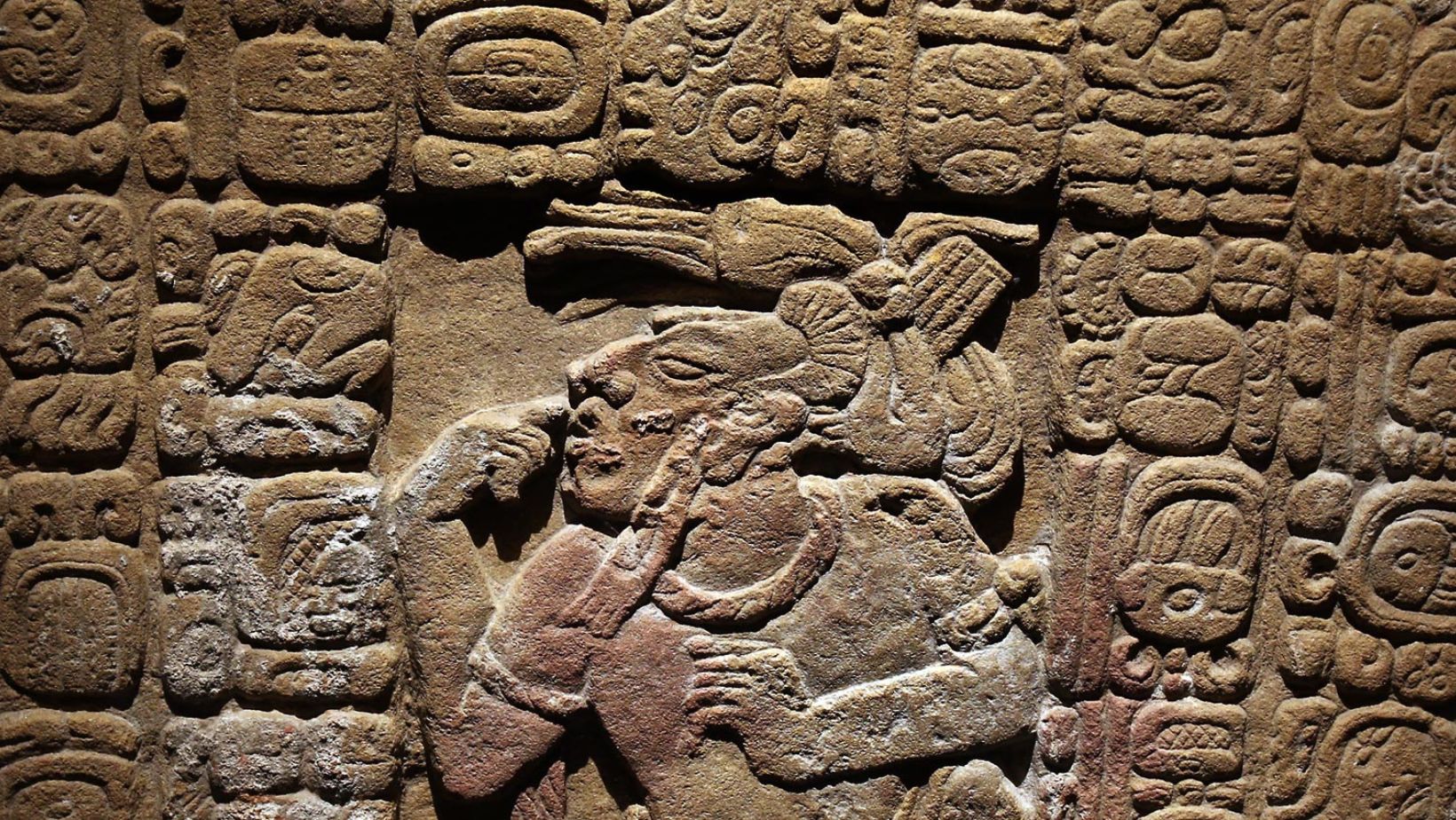
- Betwixt 500 B.C., reaching its zenith around the first century A.D., a network of trade routes known as the Silk Road fundamentally transformed the ancient world. It enabled cultures to interact and exchange goods like never before, forging economic and social ties that spanned continents.
Key Takeaway: Main Features of Mayan Art and Sculpture
Mayan art is more than eye candy—it’s a portal to ancient beliefs, where materials from limestone to jade whisper secrets of the cosmos. Stone sculptures and carvings breathe life into rulers and gods, while every jade piece connects you straight to the divine.
The Intersection of Art and Mayan Language in Civilization: Main Features of Mayan Art and Sculpture
Imagine yourself strolling through the remnants of an ancient metropolis, each rock inscribed with tales from its past. That’s precisely what exploring the rich tapestry of Ancient Maya civilization feels like. The Mayans didn’t just build cities; they wove their language into their art, leaving us messages from when hieroglyphic texts were as standard as emojis today.
Diverse Materials in Creation
Mayan artists were resourceful folks. They used whatever materials they could get their hands on—stone tools weren’t just for building but also for crafting sculptures that have stood the test of time. Imagine chipping away at large stone slabs or volcanic tuff with nothing but other rocks—that takes some serious skill. But these artisans didn’t stop there; wood carving was extensive, even though fewer wooden sculptures survive due to pesky termites and tropical weather.
Precious stones like jade would often appear when adding flair, especially if you were important enough. I think King Pakal level is necessary. And let’s not forget about animal bones or conch shells that found new life as ornate carvings depicting everything from family members to jaguar gods.
Naturalistic Portrayals of Royalty
If Instagram existed back then, Mayan rulers’ feeds would be full of selfies—or rather detailed stone sculptures showing off how divine they looked while enthroned ruler style. You see them depicted everywhere across Chichén Itzá because, let’s face it—who wouldn’t want eternity staring down at your greatness?
This wasn’t vanity—it was propaganda before social media made it cool again. These naturalistic portrayals told everyone who saw them: “I’m powerful enough to command great artists and become immortalized in art.” It showed allies and enemies alike that these leaders meant business—and maybe had a little help from deities along the way (because why else look so good?).
Symbolism in Jade Sculptures
Jade wasn’t just another pretty rock; its blue-green hues held deep meaning within Mayan culture—it represented water and vegetation vital for survival (and those epic maize god rituals). By carving figures out of this sacred material, artists turned religious beliefs into tangible symbols anyone could appreciate—even without understanding all those complex glyphs floating around.
Seriously though—if you wanted eternal blessings or needed extra luck during human sacrifice season (yikes), sporting something made out of jade might’ve been your best bet.
Key Takeaway: Main Features of Mayan Art and Sculpture
Mayan art intertwines language with visuals, turning ancient stones into storytelling canvases. Resourceful use of materials from jade to bone reflects their craftsmanship and symbolism’s importance in depicting royalty and religious beliefs.
Architectural Marvels as Canvases for Mayan Artistry: Main Features of Mayan Art and Sculpture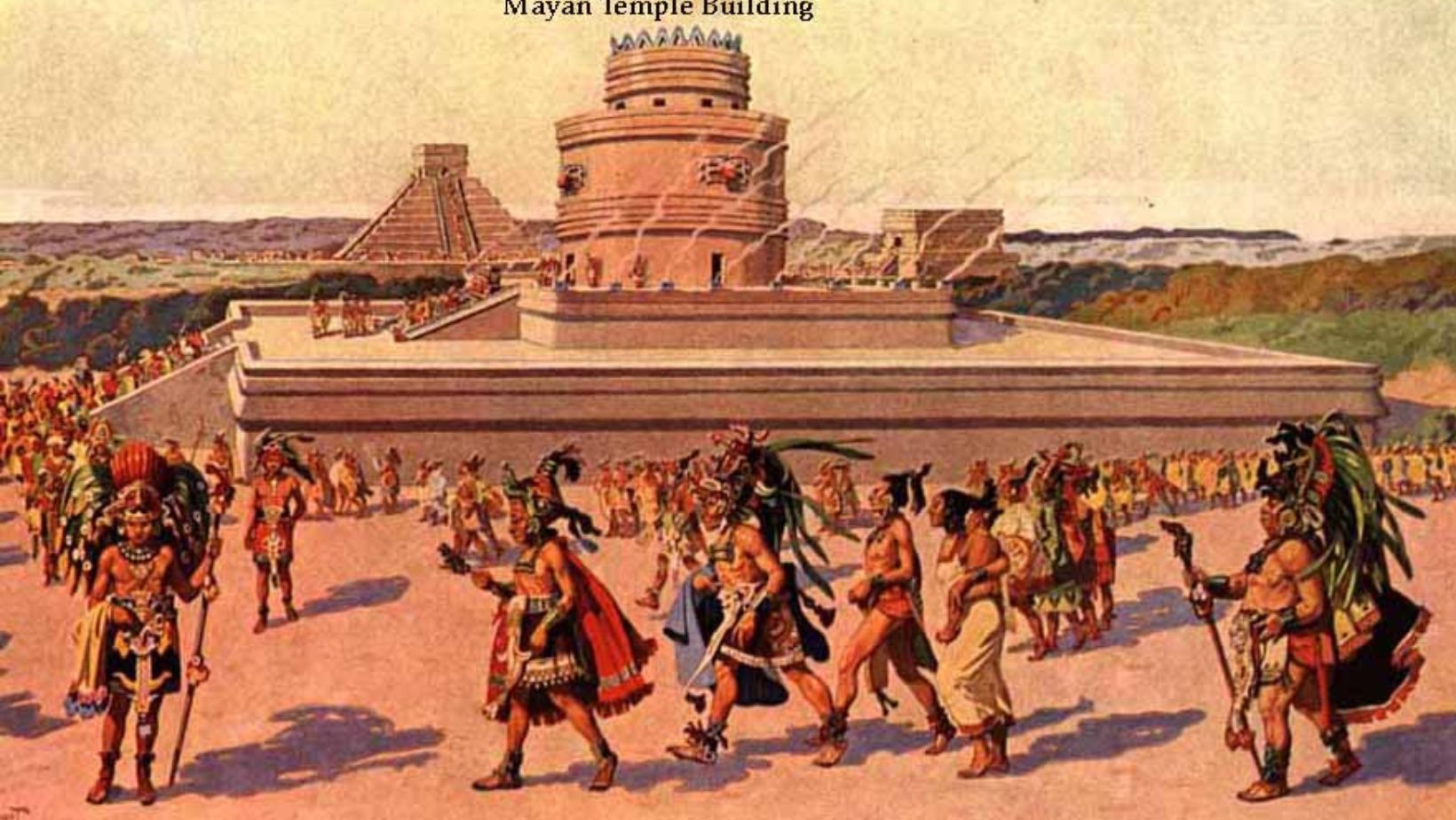
The ancient Maya were not just master builders; they turned their architecture into vast canvases that echoed the grandeur of their civilization. From the towering Tikal temple to the iconic Chichen Itza, these structures in Central America and present-day Mexico tell tales of a people deeply connected with art, religion, and astronomy.
If walls could talk, those at sites like Tikal would speak volumes about Mayan culture. They weren’t mere enclosures but narrative stones detailing the lives of royalty and deities through elaborate stone carvings that have stood against time’s test. These large stone slabs showcased history lessons and religious text, making them integral to understanding this enigmatic civilization.
Intricate high relief work on these architectural marvels depicted enthroned rulers presiding over ceremonies or human sacrifice events – chilling reminders of how power was portrayed amidst the grandiosity. The precision involved here indicates skilled artists who might’ve considered volcanic tuff or limestone not just materials but partners in storytelling.
Diverse Materials in Creation
Maya sculptors were versatile regarding materials—anything from precious stones to animal bones served as their medium. Carving wood was common too; wooden sculptures have survived less often due to decay yet give us insight into daily life far beyond royal courts’ reach.
Fine examples come alive at museums such as The Metropolitan Museum, where artifacts reveal meticulous craftsmanship using conch shells or jade—a powerful symbol representing life within Mayan ideology.
Naturalistic Portrayals of Royalty
Gazing upon a stone sculpture featuring a Maya king is akin to stepping back centuries—their likeness is carved with such detail you can almost hear whispers from ancient America’s past. This naturalism wasn’t accidental; every chisel mark told stories woven deep within the societal fabric—an homage to individual leaders and lineage continuity celebrated by family members long gone.
Symbolism in Jade Sculptures
Jade didn’t merely catch eyes with its blue-green hues—it held spiritual weight, signifying breath and essence among Maya folks who revered maize god representations adorned with this sacred material. A peek into any classic Maya site confirms jade’s prominence—its symbolism outlasts even great cities now lost under tropical canopy covers.
Key Takeaway: Main Features of Mayan Art and Sculpture
Mayan art turned their architecture into epic storybooks, with every carving revealing tales of power and purity. Skilled sculptors used everything from jade to bones, showing off intricate details that bring ancient royalty back to life. These works weren’t just for show; they were profound tributes steeped in spiritual symbolism.
Ceramics and Pottery – The Everyday Art Forms of the Maya: Main Features of Mayan Art and Sculpture
The Mayans were masterful artists, not just in grand temples but also in the palm of your hand. Their ceramics and pottery were more than mere vessels for food and drink; they were canvases that told stories, held ceremonial importance, and even whispered secrets about their everyday lives.
Mayan Ceramics: A Blend of Utility and Ceremony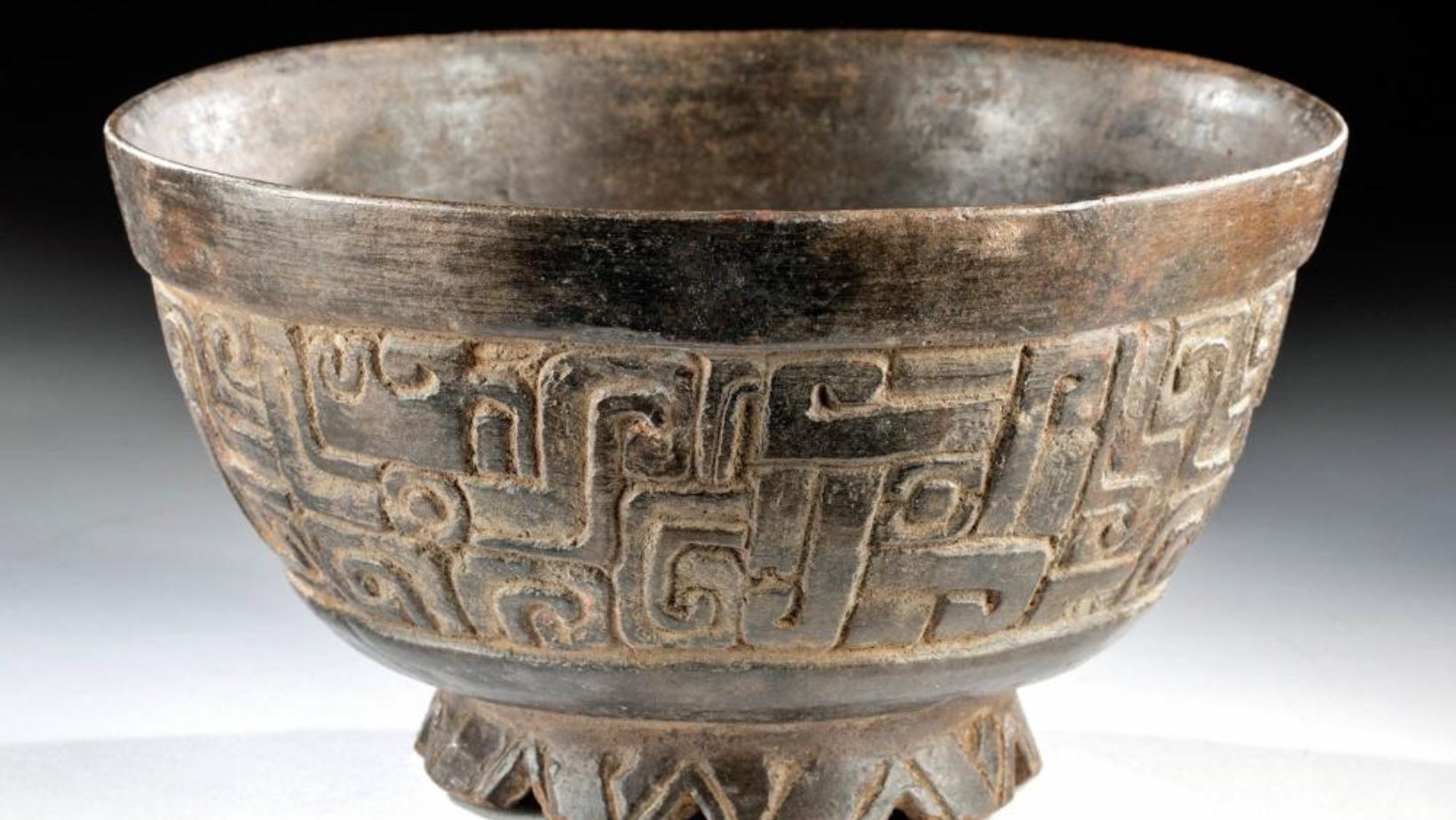
Step into any ancient Mayan household or temple, and you might find a range of fine examples, like incense burners, among other standard forms. Each piece served its purpose with grace—whether to carry water or offer prayers to the gods. Skilled hands shaped clay into elegant silhouettes before transforming them through fire into enduring art pieces.
Some pots bore intricate designs while others embraced simplicity, both styles reflecting an understanding that function could dance beautifully with form. And let’s talk colors—their palette would make modern designers swoon. Imagine vibrant reds paired with deep blacks under a tropical sun—a feast for the eyes as much as what lay within these pots was a feast for the bellies.
A Feast For Eyes: The Craftsmanship Behind Incense Burners
Dive deeper, though—and trust me, you’ll uncover natural treasures when examining incense burners closely. These items filled rooms with fragrant clouds linking earth to heaven, and their exteriors often featured complex carvings teeming with symbolism, from jaguars prowling around edges to serpents slithering across surfaces.
Sometimes figures emerged from smoke plumes crafted above these ceramic creations—gods perhaps? Or maybe revered ancestors ensure family members didn’t forget where they came from (because who doesn’t need divine intervention now and then?). These pieces weren’t just made—they were thoughtfully designed companions guiding daily rituals alongside those performing them.
The Common Form That Tells Uncommon Tales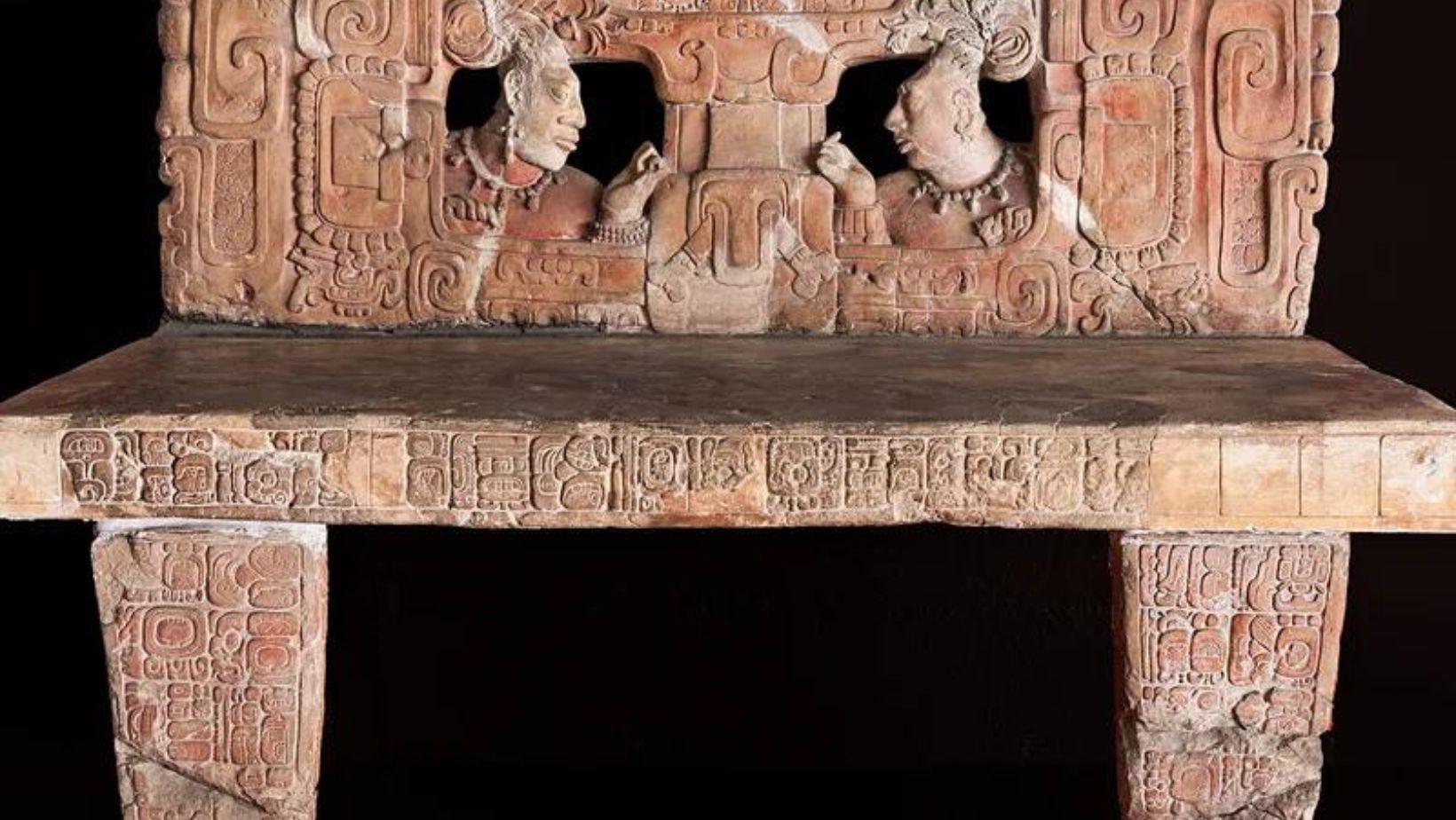
Suppose walls could talk—or better yet—if pottery could speak. Those common forms housed within Mayan homes shared countless tales if one knew how to listen (or interpret). They chronicled life cycles—from seeds sown in fields depicted on vases until harvest time, represented by maize god figurines sitting proudly atop lids protecting precious contents inside bowls beneath them.
We’re talking full-on visual narratives here, folks. No Netflix is needed when you’ve got generations’ worth of storytelling captured on your kitchen shelf, assuming your kitchen is set against the backdrop of Classic period structures in present-day Central America.
Keep that visit in mind as you move forward. It’s essential for shaping the next steps.
Key Takeaway: Main Features of Mayan Art and Sculpture
Mayan ceramics were everyday items turned into art, telling stories and serving rituals with vibrant designs and symbolic carvings. Each piece, from pots to incense burners, was a visual narrative of life in ancient Maya.
Cultural Significance Embedded in Themes and Symbolism: Main Features of Mayan Art and Sculpture
The ancient Maya left us a rich art tapestry, each piece with symbolic meaning and religious significance. Step into the world of divine beings etched in stone, where every line tells a story about gods and society’s most profound beliefs.
Symbolic Meaning Behind Maize God Imagery
In Mayan culture, the maize god was no ordinary deity; he symbolized life—a kernel sprouting from the earth to sustain civilization. Artists carved his image into wood carvings and large stone slabs with such finesse that you can almost feel him breathing within volcanic tuff or hear whispers between rows of corn. His portrayal wasn’t mere decoration; it carried profound importance for everyday Maya folks and rulers alike.
Jade sculptures often featured this revered figure cloaked in blue paint—another layer of symbolism considering jade’s association with water, fertility, and nobility. By integrating these elements seamlessly into their work, Mayan artists didn’t just create; they spoke volumes without uttering a single word.
Rituals Carved Into Stone: The Religious Significance
When you gaze upon an enthroned ruler on an ancient sculpture at sites like Chichén Itzá or within collections like those at The Metropolitan Museum of Art, know you’re witnessing more than regal grandeur. These images captured moments when kings were believed to commune directly with divine beings—acting as intermediaries between mortals and gods during sacred rituals, including human sacrifice.
This powerful imagery solidified royal authority while reinforcing spiritual dogmas central to Mayan civilization—their art serving dual purposes as political propaganda and vehicles for communal belief systems rooted deeply in celestial phenomena.
Depicting Animals: More Than Meets the Eye
Suppose one thing catches your eye amidst family members’ portrayals or jaguar god effigies. In that case, animal bones are intricately crafted into tools or jewelry by masterful hands adept at carving wood. This practice went beyond artistic flair, though; animals held great power as spirit companions, providing protection or guidance through earthly and metaphysical treacherous journeys.
Including these creatures across different mediums—from wooden sculptures to bone ornaments—reflects a deep understanding among Mayans regarding nature’s intertwined role within cosmic order & human existence—a lesson perhaps we could still learn from today.
Dive into narratives that captivate with their vividness and eloquence. You won’t regret it.
Key Takeaway: Main Features of Mayan Art and Sculpture
Mayan art isn’t just eye candy; it’s a window into their world, showing how they revered the maize god and used royal images as divine connectors. Animals in their artwork? They’re not just for show—they were spirit buddies, giving a peek at ancient beliefs where nature meets the cosmos.
Visual Narratives Captured on Walls – Murals and Paintings: Main Features of Mayan Art and Sculpture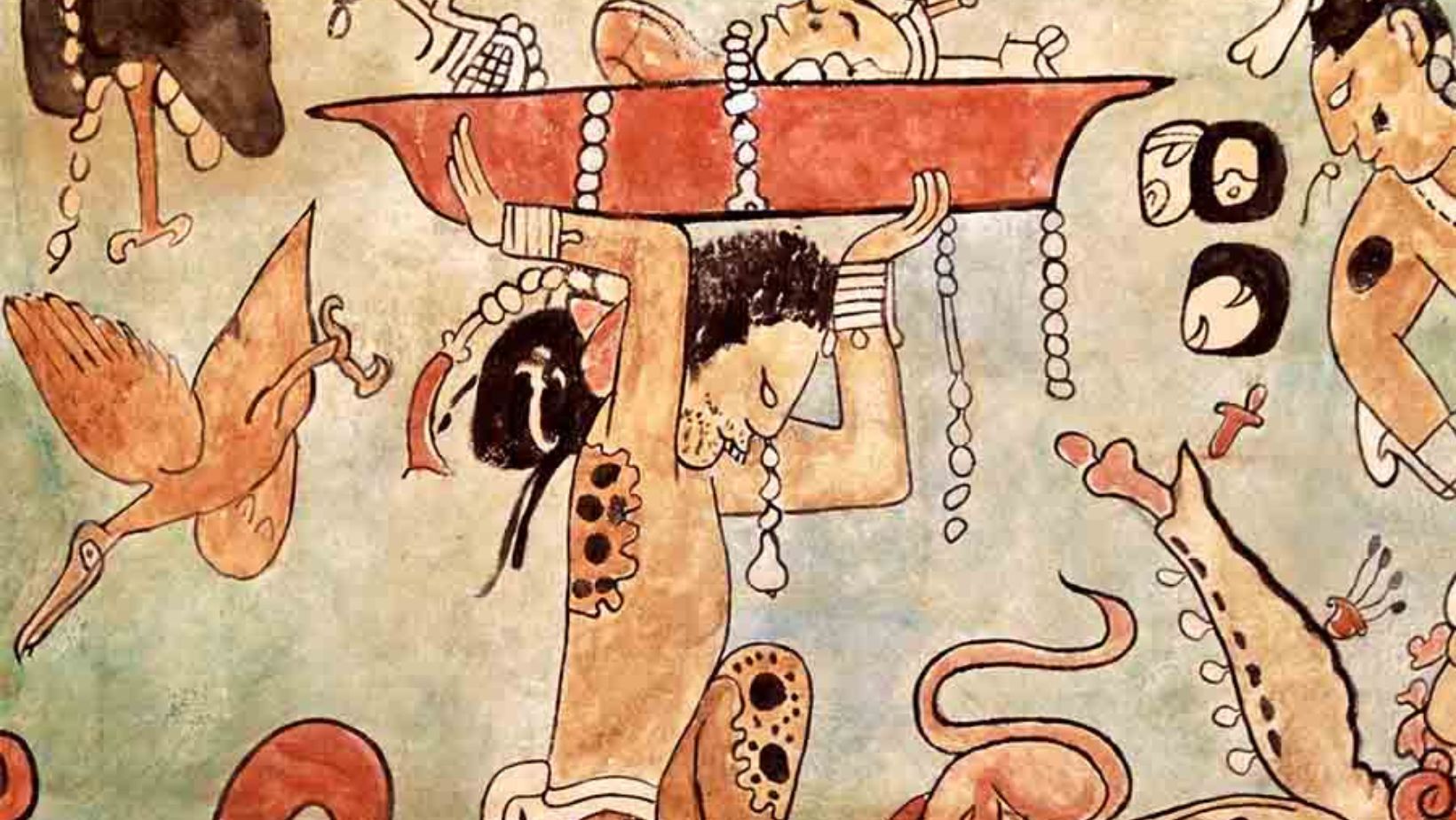
Picture this: you’re walking through the ruins of an ancient Mayan city, and your eyes catch a burst of color from a weathered wall. It’s not just any old splash—it’s a story frozen in time, told through vivid murals that have withstood centuries. These painted murals are more than art; they’re windows into the lives of people who flourished during periods like the Late Classic era.
The scenes unfold across plaster walls at sites like San Bartolo—where every brushstroke is charged with meaning. In these visual masterpieces, we see everyday life: traders bartering goods, families celebrating rituals, and rulers exuding power and divinity—all rendered in hues echoing the vibrancy of Maya civilization.
Murals Depicting Complex Society
In one mural after another, we become silent observers as history whispers its tales. Wall painting was no simple feat for Mayan artists; it demanded skillful application and deep cultural knowledge. You could say each stroke was carefully planned to narrate their worldview—a perspective where gods mingled with mortals and cosmic events played out alongside human endeavors.
We learn how important corn—or maize—was by spotting figures surrounded by ears of maize or even taking on aspects of the Maize God himself—an essential deity representing fertility and growth within their cosmology. From Early Classic wonders to Late Classic marvels, these narratives tell us much about what mattered most to them—their beliefs etched into eternity.
The Craftsmanship Behind Each Creation
If only walls could talk. But here’s our next best thing: experts decoding symbols splashed across ancient backdrops give us insider access to long-gone eras and kings’ coronations captured in high relief. And oh boy, those Mayans loved detailing intricate affairs—from jaguar hunts resonating with raw energy all over Tikal temple interiors—to ceremonies showcasing enthroned rulers commanding respect without uttering a single word.
Sure enough, though—not everything was grandiose depictions meant for public awe or reverence because there were also intimate family moments shared among loved ones immortalized amidst household settings—giving personal touches and making viewers feel almost part of their lineage.
A Palette Beyond Blue Paint
Now let’s paint ourselves some context beyond blue paint used liberally throughout many pieces symbolizing sacred water sources vital for survival—and possibly reflecting heavenly realms. This color serves as a bridge between the earthly and the divine, reminding us of nature’s importance and its spiritual connections.
Key Takeaway: Main Features of Mayan Art and Sculpture
Step into the past with Mayan murals: a blend of color, culture, and storytelling. Every scene is a chapter from history, showing gods among men and corn as life’s centerpiece.
The details are staggering—from royal ceremonies in bold relief to intimate family moments—capturing public splendor and private tenderness within their walls.
Beyond just art, each hue hints at deeper meanings; blue isn’t just blue—it symbolizes sacred waters linking earth to the divine.
FAQs in Relation to Main Features of Mayan Art and Sculpture
What are the critical features of Maya art?
Maya art is known for its detailed stone carvings, vibrant murals, and symbolic jade sculptures that tell stories and honor deities.
What were the main features of the Mayan culture?
The Mayans excelled in astronomy, developed a complex writing system with glyphs, and built impressive pyramids, all tied to their rich mythology.
What do the Mayan sculptures represent?
Sculptures often depict gods, royalty, and mythological scenes laden with symbolism about power and the cosmos.
What are the key features of the classic Maya civilization?
The Classic period saw urban growth, peak artistic expression through architecture and pottery, and advancements in mathematics and calendar-making.
Conclusion: Main Features of Mayan Art and Sculpture
Picture it: the rich tapestry of Mayan culture woven into every sculpture and fresco. The main features of Mayan art and sculpture stand tall—a testament to a civilization’s heart and soul.
Dive in; you did—to the realm where jade gleams with meaning and stone whispers secrets of ancient rulers. Your journey through this artistic world should have revealed how nature met divinity, crafting tales set in volcanic tuff.
Remember those glyphs? They were more than marks; they told stories that danced around temple walls. And think back on pottery—the every day turned extraordinary through skillful hands.
You’ve seen how maize gods mingled among men in murals vibrant as life itself. This isn’t just history; it’s heritage calling for us to witness across time.

